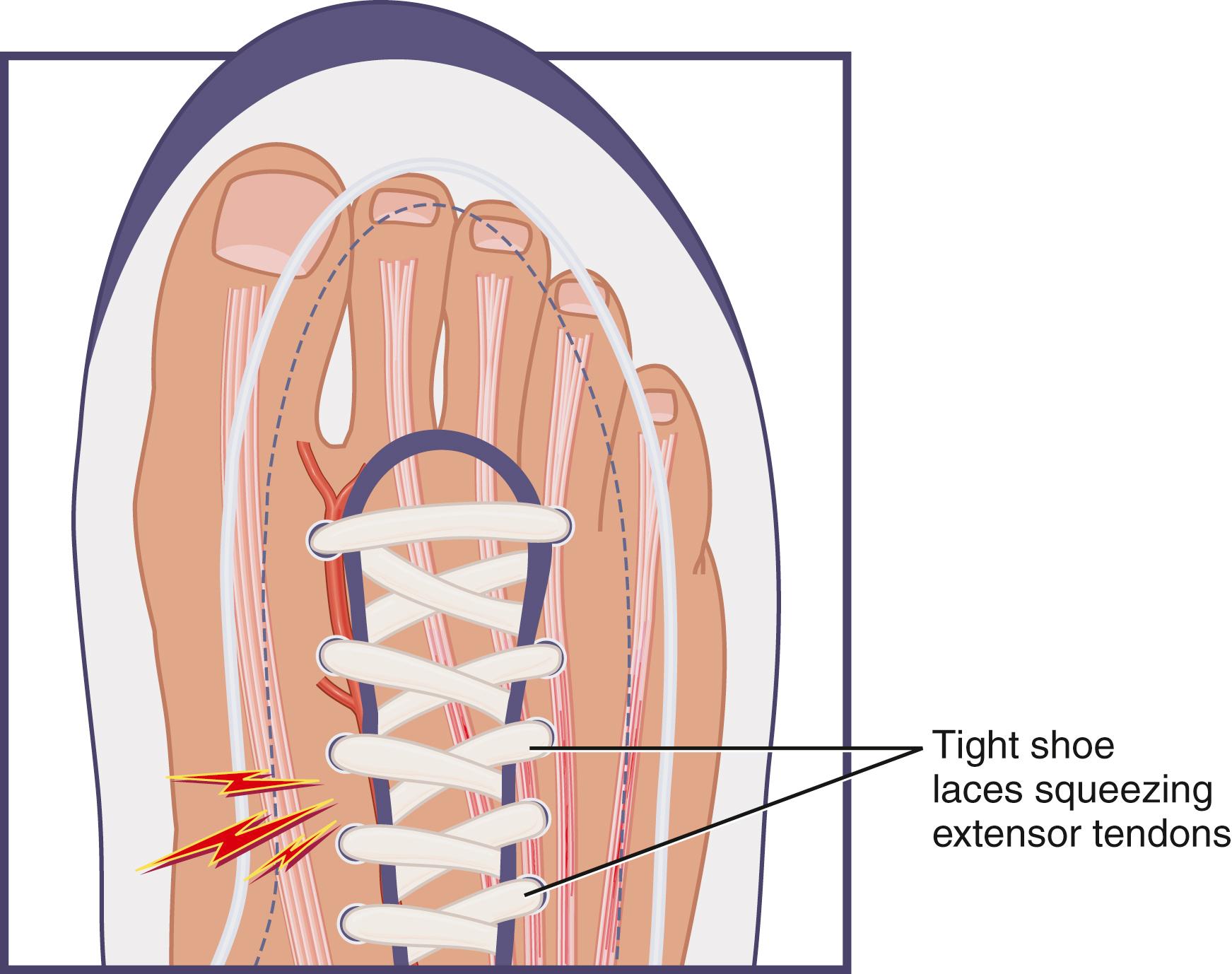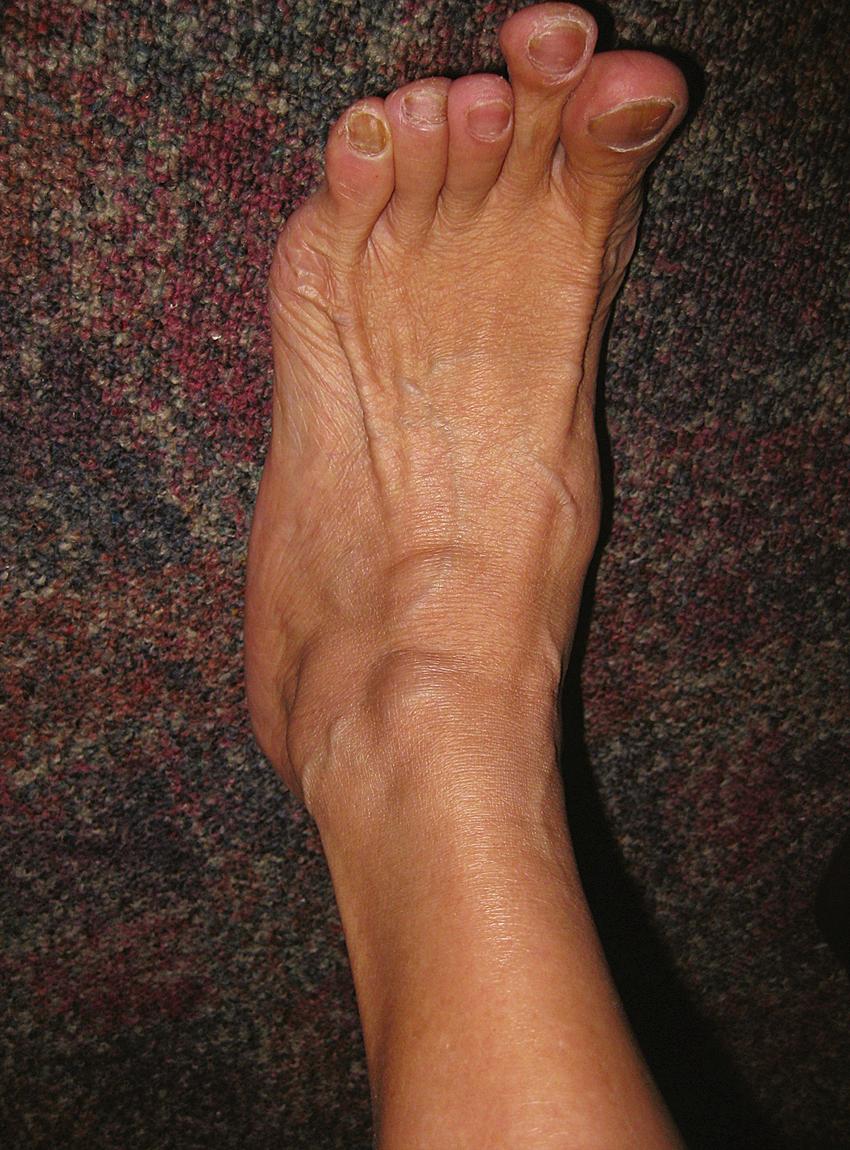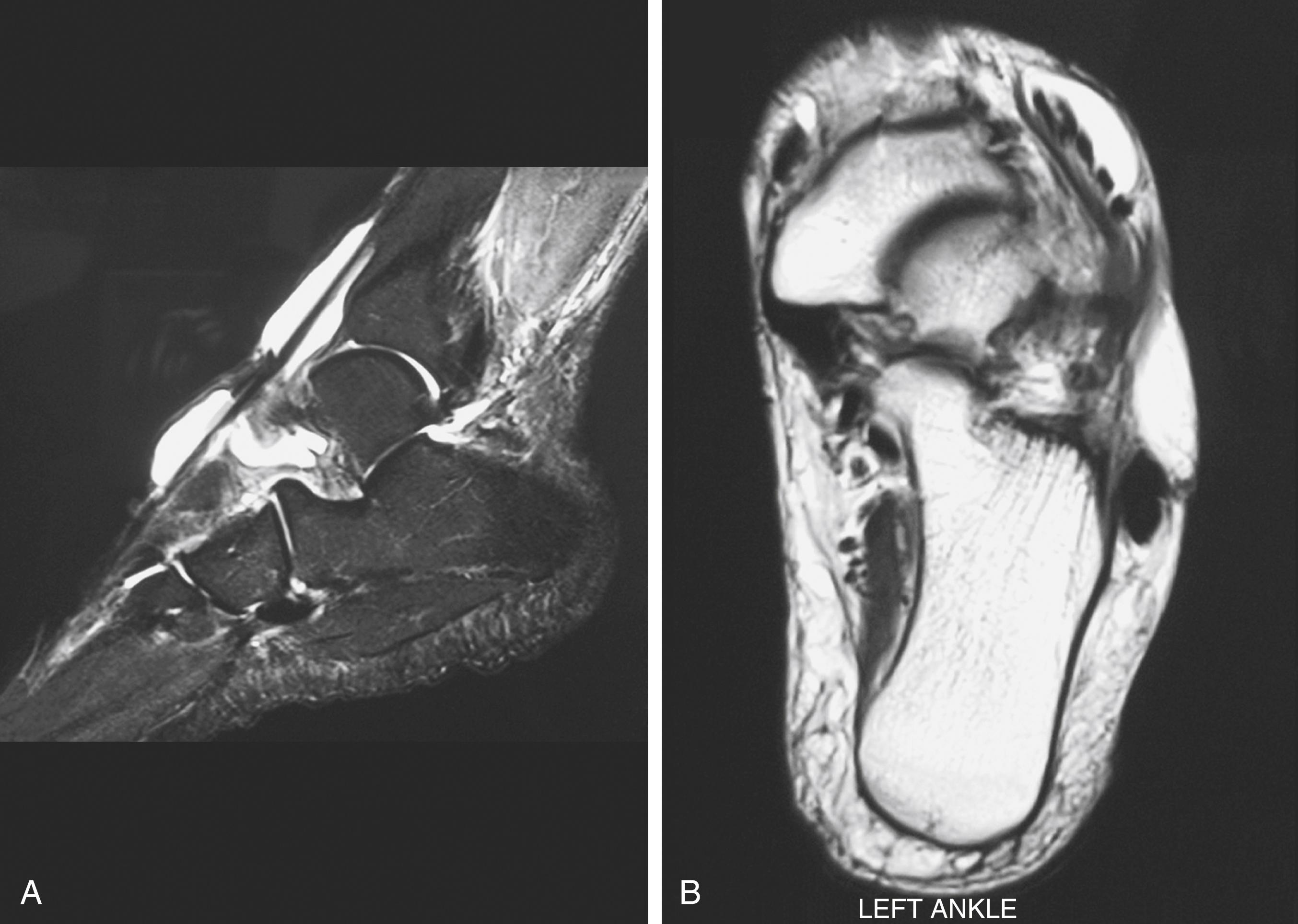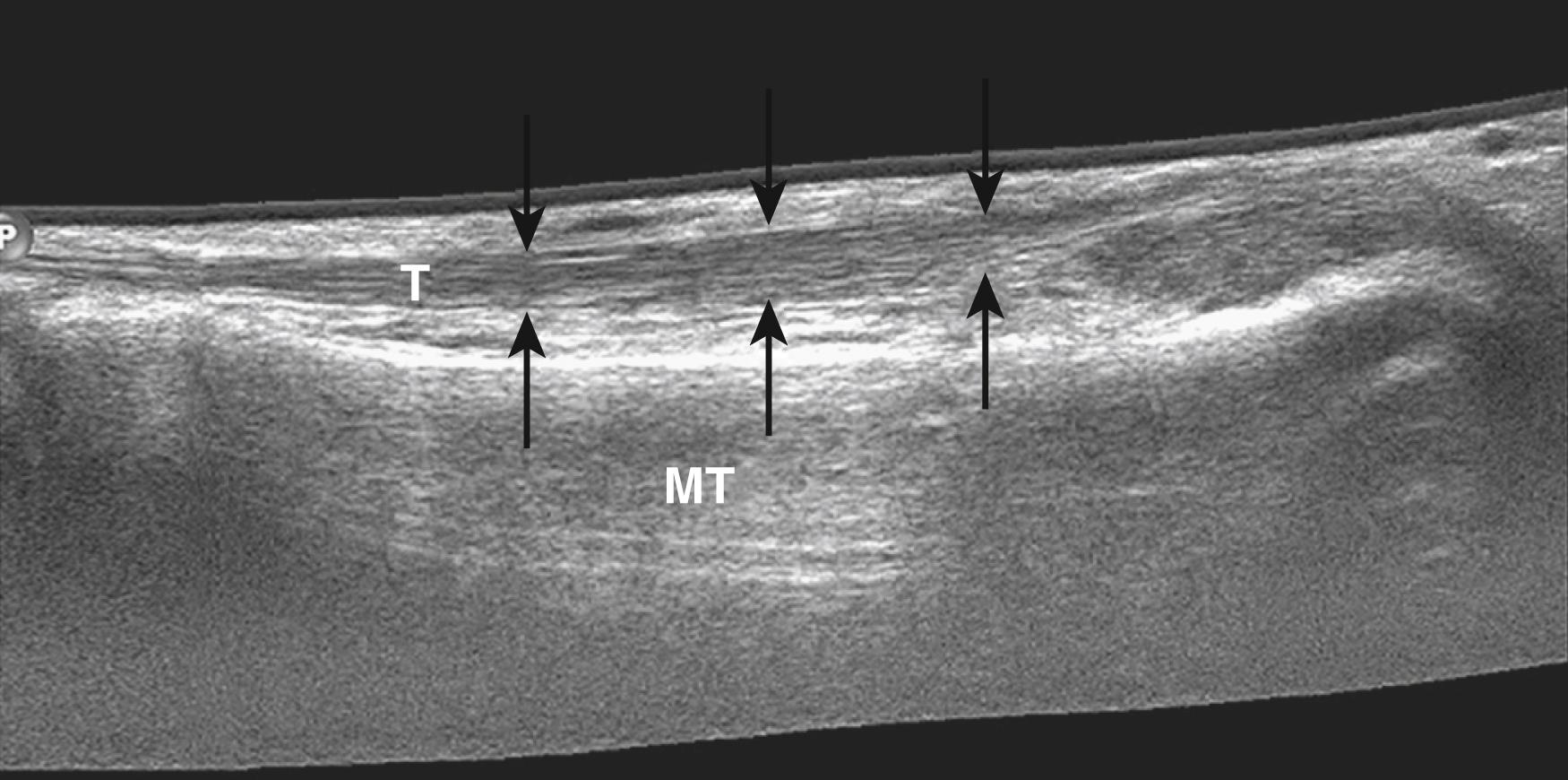Physical Address
304 North Cardinal St.
Dorchester Center, MA 02124
The superficial extensor tendons are susceptible to developing tendinitis as they pass over the dorsum of the foot. Shoes, boots, or ice skates that are laced too tightly, as well as wrinkles in the tongue of a tightly laced shoe, have been implicated as inciting factors of acute superficial extensor tendinitis ( Fig. 191.1 ). Osteophytes and ganglion cysts have also been reported to cause superficial extensor tendinitis ( Fig. 191.2 ). Although usually occurring as an isolated painful condition, altered gait as a result of pain when walking may cause the development of bursitis of the associated bursae of the tendons and ankle joint, creating additional pain and functional disability. Calcium deposition around the extensor tendons may occur if the inflammation continues, making subsequent treatment more difficult.


The pain of superficial extensor tendinitis is constant and severe and is localized in the dorsum of the foot. Significant sleep disturbance often is reported. The patient may attempt to splint the inflamed superficial extensor tendons by adopting an antalgic gait to avoid using the affected tendons. Patients with superficial extensor tendinitis exhibit pain with resisted extension of the toes. The dorsum of the foot may feel hot and appear swollen, which may be erroneously attributed to a superficial thrombophlebitis or cellulitis. Creaking or grating may be palpated when passively flexing and extending the toes.
Plain radiographs are indicated for all patients with foot and ankle pain. On the basis of the patient’s clinical presentation, additional testing may be indicated, including complete blood cell count, sedimentation rate, and antinuclear antibody testing. Magnetic resonance imaging and ultrasound imaging of the foot and ankle are indicated if joint instability is suggested as well as to aid in confirmation of the diagnosis ( Figs. 191.3 and 191.4 ). Radionuclide bone scanning is useful for identifying stress fractures of the foot and ankle not seen on plain radiographs. The injection technique described later serves as both a diagnostic and a therapeutic maneuver.


Become a Clinical Tree membership for Full access and enjoy Unlimited articles
If you are a member. Log in here